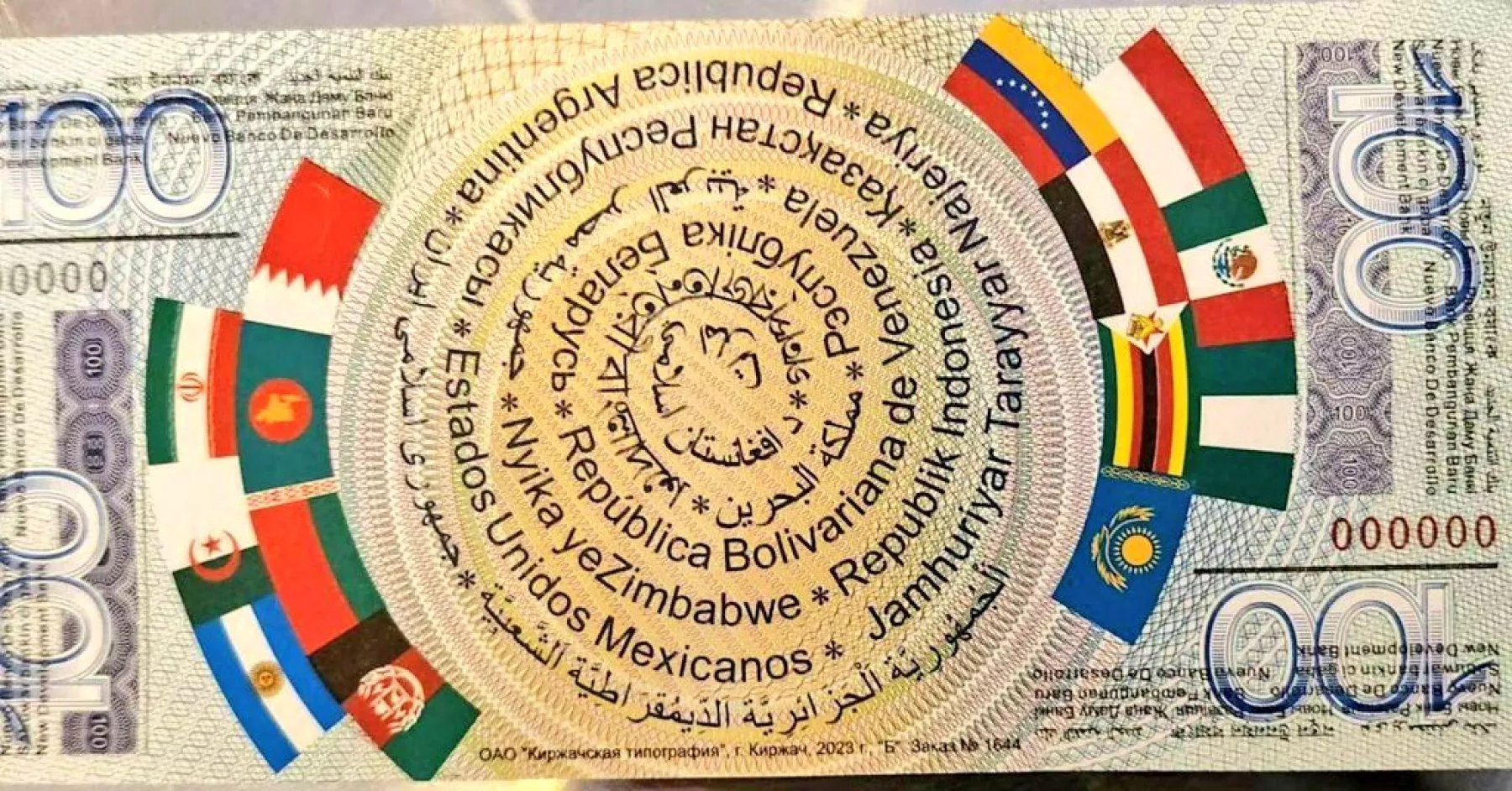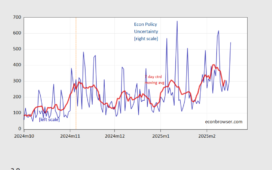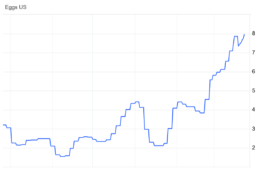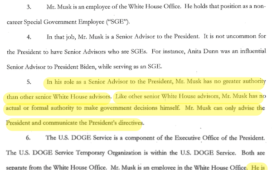“The time has come to show the United States that it is under threat from a country of 130 million inhabitants that is finally waking up.”
Russia is trying to poison bilateral relations between the Mexico and the US by taking advantage of Mexico’s ruling party Morena’s innate anti-Americanism. That is the conclusion of an article published last week by Washington-based American journalist Dolia Estévez. The basis for this claim is an alleged document published by the “Social Design Agency”, part of a Kremlin-funded global disinformation campaign called Doppelgänger.
That document somehow found its way into the hands of the FBI, and the US Department of Justice declassified it last week. In its decision to reveal elements of the document, the DOJ sought to “alert public opinion and the Mexican government about Russia’s sinister plans to drag Mexico into a spurious conflict with the United States”, reports Estévez.
“Existential Resentment”
The Russian document advocates intensifying Russian meddling in Mexico by stirring up anti-American sentiment in the country. The authors propose exploiting Mexicans’ “existential resentment” over the loss of over half of their territory to the US in the mid-19th century as well as creating a “perception of threat” on a border overwhelmed by violence and migration — all apparently with one main goal in mind: to help Donald Trump, “our partner”, get back in the White House:
Written in Russian and translated into English, the six-page text.. brings the 1848 war to life with a map depicting California, Nevada, Utah, Arizona, part of Colorado, New Mexico, Oklahoma and Texas as not belonging to either the United States or Mexico. Instead, there is an imaginary gap between the two, with the slogan “Mexico does not forgive” along the dividing line. Although territorial annexation is still present in the collective imagination of some, it is crazy to assume that it will lead to another war with the United States, which the writing evokes with a painting of the Battle of Buena Vista in 1847, which Mexico lost…
From the document’s title, A Mexican Pass for Candidate “A”: A Project for Proxies in the November 2024 Campaign – to the last sentence – “The time has come to show the United States that it is under threat from a country of 130 million inhabitants that is finally waking up” – the project makes [Russia’s] intentions clear: to use Mexico as a tool to erode the credibility of the US electoral system and help Trump win the elections.
“Candidate A (Trump), who was building a border wall, who every day of his presidency talked about the immigration problem coming from the South and to whom the baton must be passed to shift the political narrative [NC: presumably a reference to the war in Ukraine], urgently needs an intensifying confrontation with Mexico.” The success of the U.S. economy, which electorally favours “candidate B” (Democrat), leaves Trump the option of “creating the perception of a threat” from violent cartels and hordes of angry migrants at the border.
Morena, the party of former President Andrés Manuel López Obrador and the current head of state Claudia Sheinbaum, is, in the words of the alleged document cited by Estévez, “an easily manipulated centre-left formation with anti-American tendencies, that is favourable to de-dollarisation and a reorientation of Mexico’s economic priorities.” As for Morena’s electoral base, it consists principally of Mexico’s disadvantaged classes, which largely share this anti-American sentiment — again, according to the document cited by Estévez.
But is the document real? Who knows? It could be. But all we have to go on is the word of the FBI, whose judgment was, to put it mildly, sorely lacking in its “investigation” of Russiagate, as the Durham Report concluded last year:
“[T]he FBI discounted or willfully ignored material information that did not support the narrative of a collusive relationship between Trump and Russia… An objective and honest assessment of these strands of information should have caused the FBI to question not only the predication for Crossfire Hurricane, but also to reflect on whether the FBI was being manipulated for political or other purposes. Unfortunately, it did not.”
Even by the standards of those who brought us Russiagate, this latest story is riddled with holes, not least of which is the alleged document’s use of the word “success” to describe the US economy right now. Then there is the idea that the government of Mexico, whose economy is joined at the hip to the US, is somehow favourable to de-dollarisation. It also seems that Kamala Harris, like Biden before her, is perfectly capable of sabotaging her own presidential campaign without any need of outside help, and one would imagine that Moscow knows this.
Also, both the former Trump and current Biden governments have done a sterling job of stoking anti-US sentiment in Mexico on their own, through a combination of insults (mainly on the part of Trump), lawsuits (mainly Biden) and threats (from both sides but particularly Trump and the Republicans who have been talking about intervening militarily in Mexico to cap the capos for at least five years). And lest we forget, these accusations, whether true or not, are coming from the country that has meddled the most in Mexico for the past 180 years.
That all being said, Russia does have a motive for fanning the flames of anti-US sentiment in Mexico. Exacerbating tensions between the US and its direct southern neighbour and largest trade partner is a good way of keeping the US on its toes in its own neighbourhood, and somewhat distracted from other parts of the world. The same goes for Moscow’s deepening of ties with Cuba, Venezuela and Nicaragua.
But if that is what Moscow is indeed doing, it pales into insignificance with what the US has done over the past 10 years with Russia’s direct neighbour, Ukraine, which includes (but is by no means limited to) orchestrating the Euro Maiden coup, empowering Ukraine’s Azov Nazis and arming Kiev to the teeth so that it could wage war on the Eastern oblasts. When Russia’s invasion of Ukraine finally began, Washington, together with London, did everything they could to wreck any chances of a swift negotiated peace.
Estévez closes her article with the following exhortation to / admonition of her readers:
What I relate here should be enough to convince the short-sighted, skeptical or ignorant that Russian interference in Mexico is not an invention of the CIA, nor the product of the “Russophobia” of a handful of journalists on both sides of the Atlantic, but a real and proactive strategy of great importance in which Morena, knowingly or not, is a formidably useful tool.
“Back to the Cold War”
US accusations of Russian meddling in Mexico are likely to continue, if not intensify, in the coming months. After all, this is a trend that began over two years ago. As readers may recall, in the early days of the Ukraine conflict, US Ambassador Ken Salazar told Mexican lawmakers, to their faces, that Mexico cannot ever be close to Russia:
“I have here (he said while indicating lapels on his jacket breast) the flags of Mexico, the United States and Ukraine. We have to be in solidarity with Ukraine and against Russia.”
The Russian ambassador was here yesterday making a lot of noise about how Mexico and Russia are so close. This, sorry, can never happen. It can never happen…”
As we noted at the time, Salazar’s comments were controversial for a variety of reasons:
First, Mexico is a sovereign nation and as such should be able to choose which countries it wants to forge close ties with, even if they are the target of U.S. sanctions.
Second, the hypocrisy stinks. U.S. and its European allies have consistently argued that Russia has absolutely no right to try to determine what happens within the borders of its sovereign neighbour Ukraine, even as tons of weapons poured into the country from NATO Member States such as Poland and the Czech Republic. Yet the US Government, through its ambassador to Mexico, is now trying to literally dictate the terms of Mexico’s relationship with Russia.
What the U.S. essentially seems to be saying is that neutrality is not an option in the escalating conflict between Russia and the West — at least not for Mexico.
Which brings us to the third point: Mexico has a long, albeit interrupted, history of neutrality dating all the way back to the early 1930s. In 1939, a neutrality clause was even added to its constitution by the government of then-President Lazaro Cardenas, which also nationalized Mexico’s oil and gas a year earlier. Since then Mexico has enjoyed close relations with many countries that have been targeted by international sanctions, including Cuba, Nicaragua and Venezuela. Mexico’s long-held position of neutrality has also made it a haven for people seeking political asylum, including republicans fleeing Spain at the end of the Spanish Civil War and the emigres of the Southern Cone dictatorships of the 1960s and ’70s.
Despite relentless US pressure, Mexico continues to enjoy close ties with Russia, even going so far as to invite Vladimir Putin to Claudia Sheinbaum’s inaugural ceremony, which he ended up declining for obvious reasons. In March 2023, Estévez reported that in a matter of just a few months the total number of Russian diplomats in Mexico had increased by around 60%, to 85. In its September article, “Back to the Cold War: Russia Uses Mexico As a Hub for Spying on the U.S.“, NBC highlighted US officials’ concerns about the recent build up of Russian diplomats and intelligence officers in Mexico.
Russia has added dozens of personnel to its embassy staff in Mexico City in the past few years, even though Moscow has only limited trade ties with the country. U.S. officials say the trend is concerning and believe the extensive buildup is aimed at bolstering the Kremlin’s intelligence operations targeting the U.S., as well as its propaganda efforts aimed at undermining Washington and Ukraine…
CIA Director William Burns said earlier this month his agency and the U.S. government are “sharply focused” on Russia’s expanding footprint in Mexico, which he said was partly the result of Russian spies being expelled from foreign capitals after Moscow’s full-scale invasion of Ukraine.
“Part of this is a function of the fact that so many Russian intelligence officers have been kicked out of Europe. … So they’re looking for places to go and looking for places in which they can operate,” Burns said in London this month when asked about suspected Russian spying out of Mexico. “But we’re very sharply focused on that.”
Air Force Gen. Glen VanHerck, head of U.S. Northern Command, even suggested in 2022 that Mexico is currently home to the “largest portion of GRU members in the world… Those are Russian intelligence personnel, and they keep an eye very closely on their opportunities to have influence on U.S. opportunities and access.”
Part of Russia’s growing influence in Latin America is through the media. Unlike in Europe and North America, most Latin American countries, including Mexico, have not banned RT. On the contrary, a study by the Reuters Institute for the Study of Journalism at the University of Oxford revealed how RT and the Sputnik news agency have increased their presence in Latin America after the invasion of Ukraine, adding a group of influencers from the region to their team of presenters and journalists. RT is even broadcast on Mexico City’s public transport.
To the immense frustration of Washington and its European allies/vassals, Mexico’s government, like most governments in the region, has tried to chart an independent course on the Russia-Ukraine conflict. This, as far as I can tell, is not a product of pressure or manipulation from Moscow but rather a manifestation of Mexico’s historic commitment to neutrality in wars.
Like Brazil and most other LatAm nations, Mexico resolutely opposes sanctions, for an array of economic, geostrategic and ethical reasons that we have outlined in previous posts (here and here). These countries are terrified, understandably, by the precedent the US, EU, UK and friends have set by attempting to excise Russia from the global financial system as well as Washington’s weaponisation of the dollar.
Lastly, this being BRICS week, an article on Mexico-Russia relations would not be complete without a brief mention of the purely symbolic BRICS banknote Putin flashed for the cameras. It is, I believe, the second time the BRICS banknote has made an appearance, the first time being at the BRICS 2023 Summit in Durban.
As readers may have noticed, one side of the note features the flags of the five founding members while the other (depicted below) shows the flags of 14 other nations — some current members, others perhaps future members. Interestingly, one of the flags featured is Mexico’s, which reignited rumours that Mexico may one day join the BRICS. The Argentine flag also makes an appearance despite the fact Javier Milei declined the opportunity to join the grouping while the flag of Ethiopia, already a member of BRICS+, doesn’t.
The inclusion of the Mexican flag is, I imagine, little more than expert trolling by Putin. As both AMLO and Sheinbaum have said, and in AMLO’s case on numerous occasions, this is not going to happen — at least not in the current context. Mexico’s economy is simply too integrated with the US and Canada’s for it to be able to join the BRICS. And Washington will presumably do whatever it can to ensure it never comes to pass. As Sheinbaum said last week, Mexico will be open to other countries for the next six years of her term, but “our interest is in strengthening the trade agreement with the United States and Canada.”
The only thing that might change that is if the US continues to hurl insults, threats and lawsuits in Mexico’s direction — or even worse, if a new Trump administration delivers on its threat to intervene militarily in Mexico.















